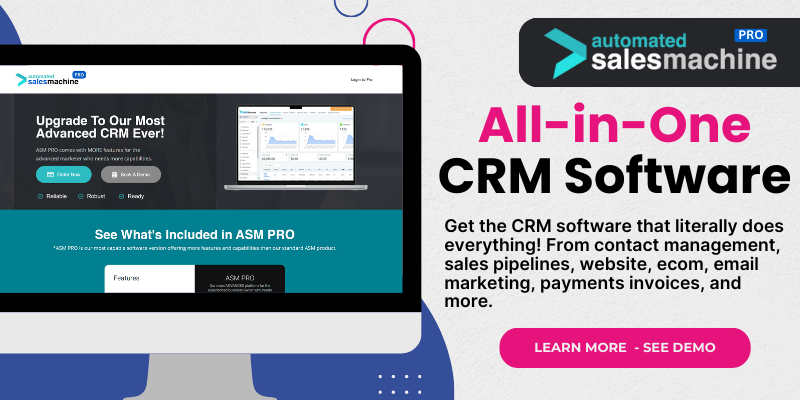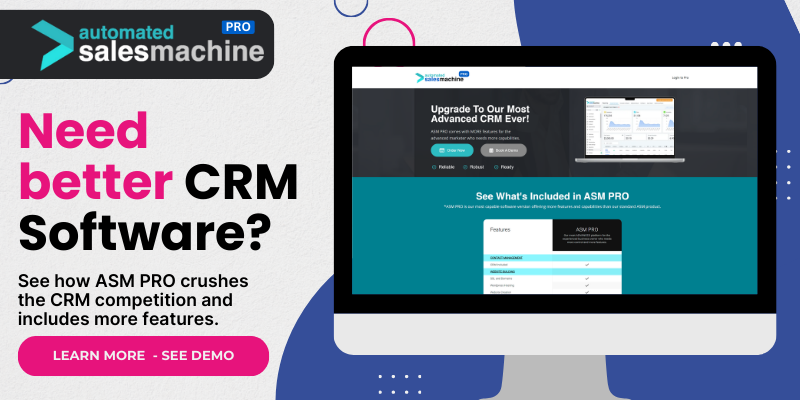1. Understand Your Needs
Assess Your Business Objectives
First off, before jumping into any new software, it’s crucial to sit down and truly understand what your business needs. What are your goals? Are you looking to improve customer retention or streamline communication? Taking the time to answer these questions will lay a solid foundation for your CRM workflow.
For me, I’ve found that breaking down objectives into manageable chunks helps. Instead of saying, “I want to boost sales,” I focus on specific areas like “increasing upsells to existing customers.” Having that clarity helps in selecting the right tools and features.
Moreover, involving your team in these discussions is so important. They often have insights that you might overlook. By gathering diverse perspectives, you can align your CRM strategy with the actual needs of those engaging with customers day in and day out.
Prioritize Features that Matter
Not every feature of every CRM is going to be useful for your specific situation. I remember getting overwhelmed by all the bells and whistles during my first CRM setup. I had to strip it back and focus on core functionalities that directly supported my business objectives.
Take a little time to prioritize. Make a list of must-have features and nice-to-have ones. This helps in making decisions easier down the line and ensures that your team isn’t swamped by unnecessary complexity.
Trust me, keeping it simple pays off. A streamlined system not only saves time but also enhances user adoption, which is crucial for any tech you decide to implement.
Regularly Revisit Your Needs
As your business grows and changes, so do your needs. This means it’s super important to regularly revisit your CRM strategy. I’ve learned the hard way that sticking to outdated processes can really hold back progress.
Set a recurring time, maybe every six months, to assess whether your CRM is still meeting your needs. Ask your team for feedback. Are there pain points in the workflow? This ongoing conversation helps you stay adaptable and on top of emerging trends in both the market and technology.
Embracing a culture of continuous improvement keeps your CRM alive and kicking, rather than letting it gather dust as ‘just another tool’ in your arsenal.
2. Ensure Seamless Integration
Connect All Your Tools
In my experience, one of the biggest game-changers for improving CRM workflow is ensuring all of your tools connect seamlessly. If your CRM doesn’t play nice with other software (like email platforms and project management tools), you’re seriously limiting efficiency.
My advice? Look for CRM systems that offer robust integration options. When everything is interconnected, data flows freely, feedback loops shorten, and your team can sell like rockstars without skipping a beat.
Consider what tools your team uses daily and make a wishlist. Keep communication open with your IT team about integrations that could support your workflow better.
Use APIs Wisely
If you’ve got a little tech-savvy in you, exploring APIs can be a great way to create custom integrations that fit your needs even better. When you leverage APIs, you’re essentially opening up a whole new world of automation and efficiency.
Don’t be intimidated by them; think of APIs as conversation starters between your various tools. A little research and some guided classes or tutorials can go a long way in making the most of this technology. Trust me, it’s worth the learning curve!
Additionally, when you can automate repetitive tasks through API integration, you free up valuable time for more strategic work. It’s a win-win situation!
Maintain Data Consistency
When it comes to CRM, having consistent data is key. Otherwise, you’re just setting yourself up for confusion and errors. I’ve had my share of instances where inconsistent data led to mixed messaging or, worse, missed opportunities. Yikes!
Develop a clear protocol for data entry to ensure everyone is on the same page. This could involve creating templates, documentation, or training sessions to get everyone up to speed.
Also, consider periodic audits of your data. Regular checks help catch inconsistencies and ensure that your data remains a reliable resource for making decisions.
3. Train Your Team Effectively
Embrace Hands-On Training
Let’s face it, asking your team to figure things out on their own can be a disaster. When we first rolled out our CRM, I realized that hands-on training sessions were the way to go. It made a world of difference!
Organize training workshops where your team can play around with the CRM in a low-pressure environment. This way, they can ask questions and gain confidence using the system. You want them to feel like pros, not just hesitant button-pushers.
Plus, providing ongoing refresher courses can be useful, especially when new features roll out. Keeping everyone updated prevents frustration and encourages continual improvement.
Encourage Questions and Feedback
Creating a culture where team members feel comfortable asking questions is essential. I always tell my team that there’s no such thing as a stupid question! The more open communication you foster, the better everyone will use the CRM.
Encourage your team to provide feedback about what they like or what they find challenging. Their insights can reveal issues you didn’t even think about and can help you adjust training and processes accordingly.
Regular check-ins or informal meetings can provide a space for these discussions. Candid conversations can lead to improvements that benefit the entire workflow.
Make Learning Part of Your Culture
Lastly, I’ve learned that making learning an integral part of the company culture pays dividends. Encourage team members to share tips and tricks with each other. A little knowledge-sharing can go a long way!
Consider creating a “CRM Champion” role within your team. This person can be responsible for helping others and promoting best practices. When there’s a go-to person for questions, it helps build camaraderie and confidence.
Incentivizing learning, whether through recognition or rewards, can motivate the whole team to engage with the CRM more deeply. After all, we’re all in this together!
4. Set Clear KPIs and Review Regularly
Define Relevant KPIs
Now that we have our CRM all set up, it’s essential to keep track of how well it’s actually working. That’s where defining Key Performance Indicators (KPIs) comes into play. I like to keep these relevant to my objectives for a clearer picture.
For example, if improving customer relationships is your goal, you might track metrics like response time or customer satisfaction scores. Lay out these KPIs at the outset, so everyone knows what to aim for.
Documenting progress and making KPI dashboards can be a helpful visual cue for the team and keep everyone motivated. Seeing how you’re progressing towards your goals can ignite that competitive spirit and teamwork!
Review Performance Regularly
Don’t just set KPIs and forget them. Schedule regular reviews, whether monthly or quarterly, to analyze performance against these indicators. I find that this reflection helps highlight areas of success and those needing improvement.
When you gather your team and discuss the KPIs, be open to what’s working and what isn’t. This candid review prevents complacency and promotes accountability, which leads to continuous improvements.
Over time, those little adjustments compound, leading to major improvements. Trust the process and your team to innovate where necessary!
Adjust Strategies Accordingly
The beauty of reviewing KPIs regularly means you can pivot your strategies when something isn’t working. If you notice a decline in a particular area, it’s an opportunity to dive in and figure out the root cause.
Perhaps it’s lack of training or even adjusting the CRM settings. Getting to the bottom of issues as they arise rather than ignoring them can save you from larger problems down the road.
Being flexible and adaptable with your strategies means you won’t be stuck in a rut. Embrace the ebb and flow—your CRM should evolve as your business does!
5. Foster Good Communication and Collaboration
Open Communication Channels
Creating an environment where open communication thrives is critical for a successful CRM workflow. I recommend utilizing collaboration tools or chat platforms, especially if your team is remote or spread out. This cultivates that sense of community no matter where everyone is located.
Encourage regular team huddles to discuss CRM-related topics. Whether it’s successes, challenges, or improvements, keeping everyone in the loop helps build trust and a team-oriented culture.
When communication channels are open, you’re more likely to get honest feedback and foster collaboration among team members, ultimately enhancing the CRM usage across the board.
Promote Collaborative Projects
Try to weave collaborative projects into your CRM processes. For example, organizing joint sales and marketing campaigns can create teamwork and visibility across departments. I’ve seen firsthand how much smoother things run when everyone is working towards the same goal.
Using the CRM to track these projects can help everyone see how their individual work ties into the bigger picture. This not only maximizes buy-in but also leads to better outcomes.
Fostering collaboration can ignite creative solutions to challenges and ensure it’s a team effort when it comes to customer engagement.
Celebrate Wins Together
Lastly, don’t forget to celebrate your team’s wins—big or small! Whether it’s achieving a KPI, closing a major deal, or simply a successful CRM rollout, public recognition can boost morale.
Regular acknowledgments can also reinforce the importance of the CRM and motivate everyone to keep striving for those goals. Incorporating this kind of recognition might even foster competition and drive overall performance.
Creating an upbeat and active team culture only helps with keeping everyone engaged and enthusiastic about using the CRM. And who doesn’t love a little celebration?
FAQs
1. What are the first steps to improve my CRM workflow?
Start by assessing your business needs and identifying the necessary features for your CRM. Involve your team in the process to get a balanced view.
2. How important is team training for CRM success?
Team training is crucial! Hands-on training boosts confidence and ensures everyone knows how to use the CRM effectively, avoiding confusion in the future.
3. How often should we review our KPIs?
It’s best to have regular reviews, like monthly or quarterly, to keep an eye on performance and make necessary adjustments. This practice helps track progress efficiently.
4. What tools can help facilitate communication within a CRM?
Consider using collaboration platforms like Slack or Microsoft Teams. These tools can help keep discussions and updates flowing smoothly across your teams.
5. How can I encourage better collaboration using CRM tools?
Promote shared projects that bring together different departments and utilize CRM features to track progress, encouraging teamwork and open communication.

